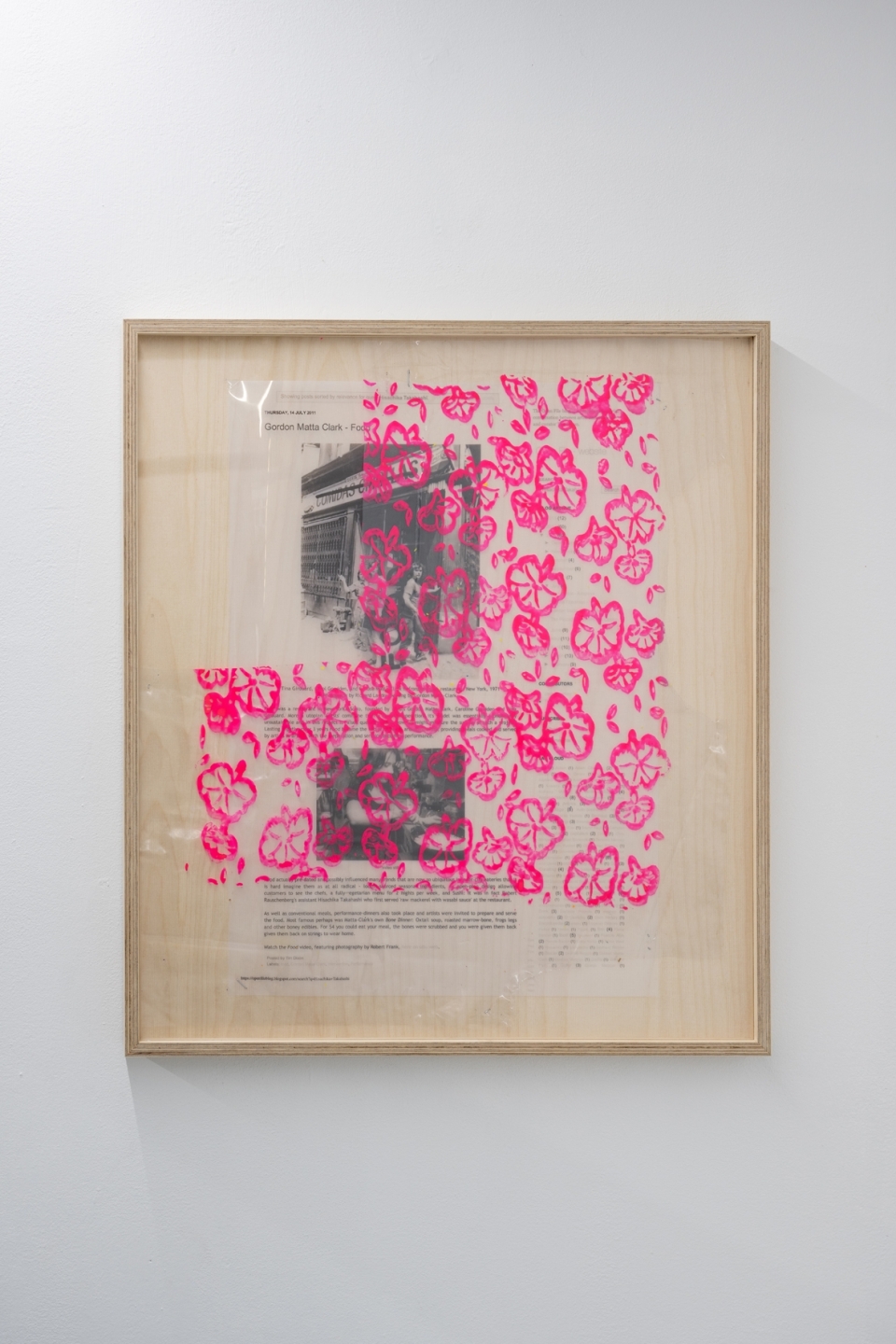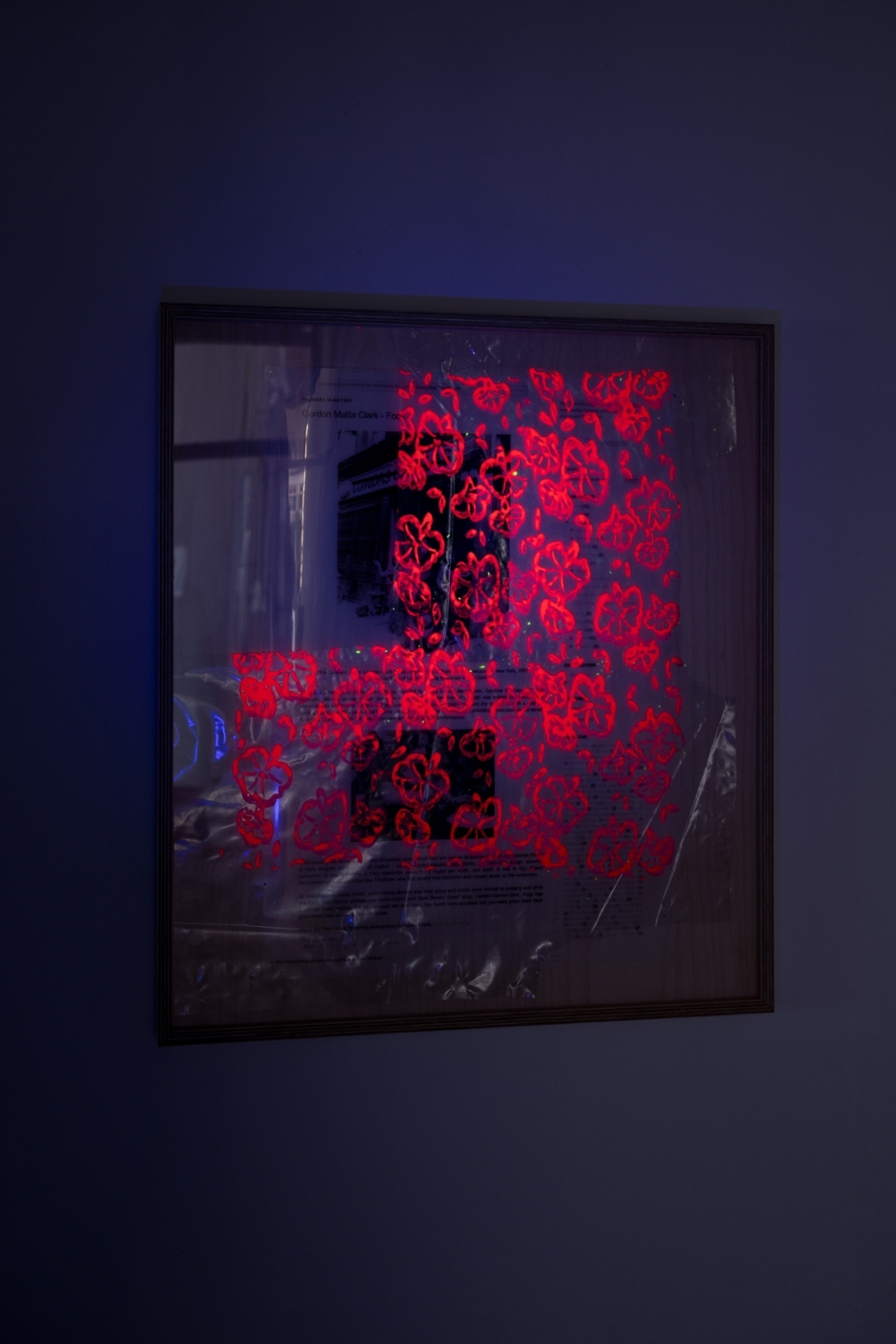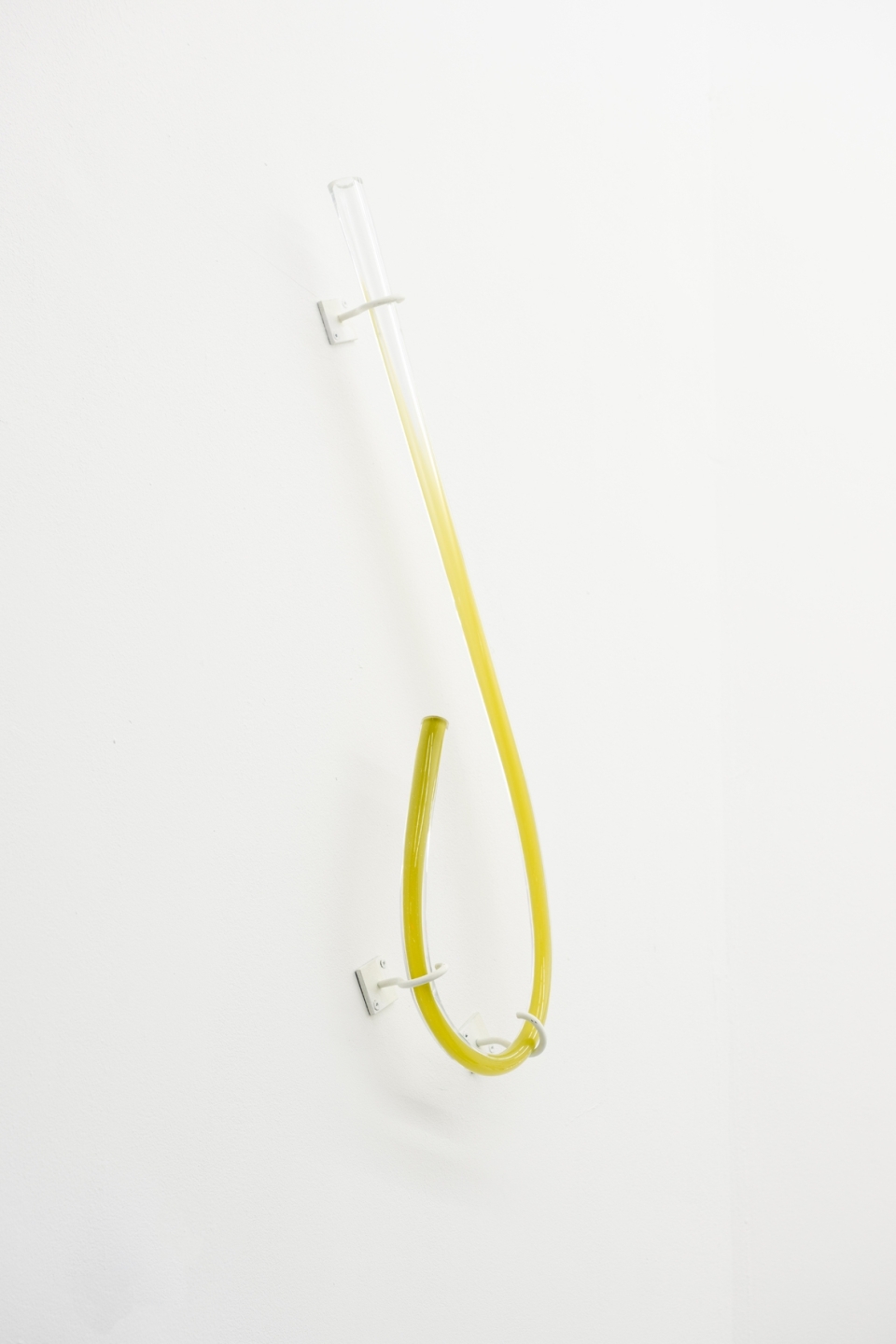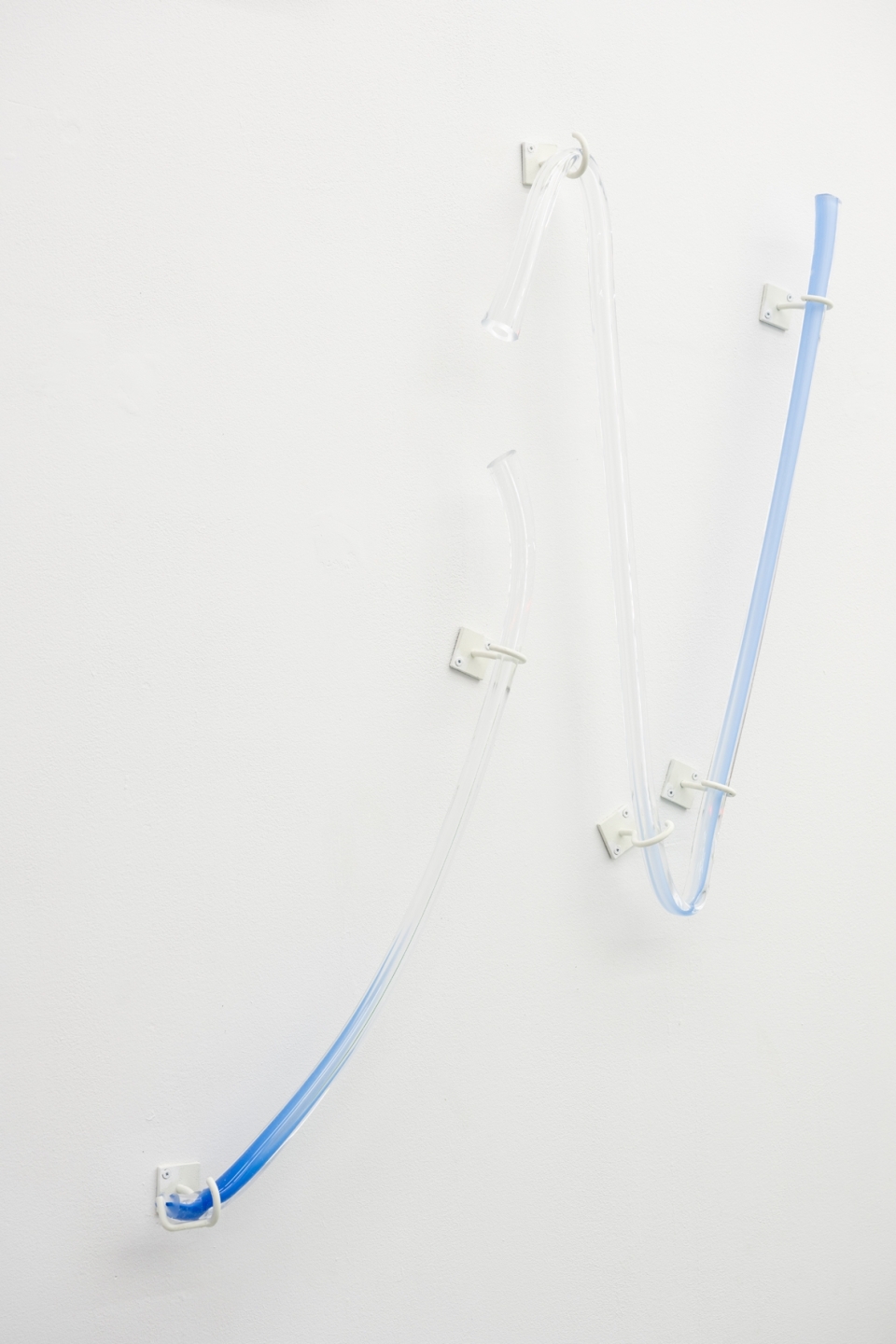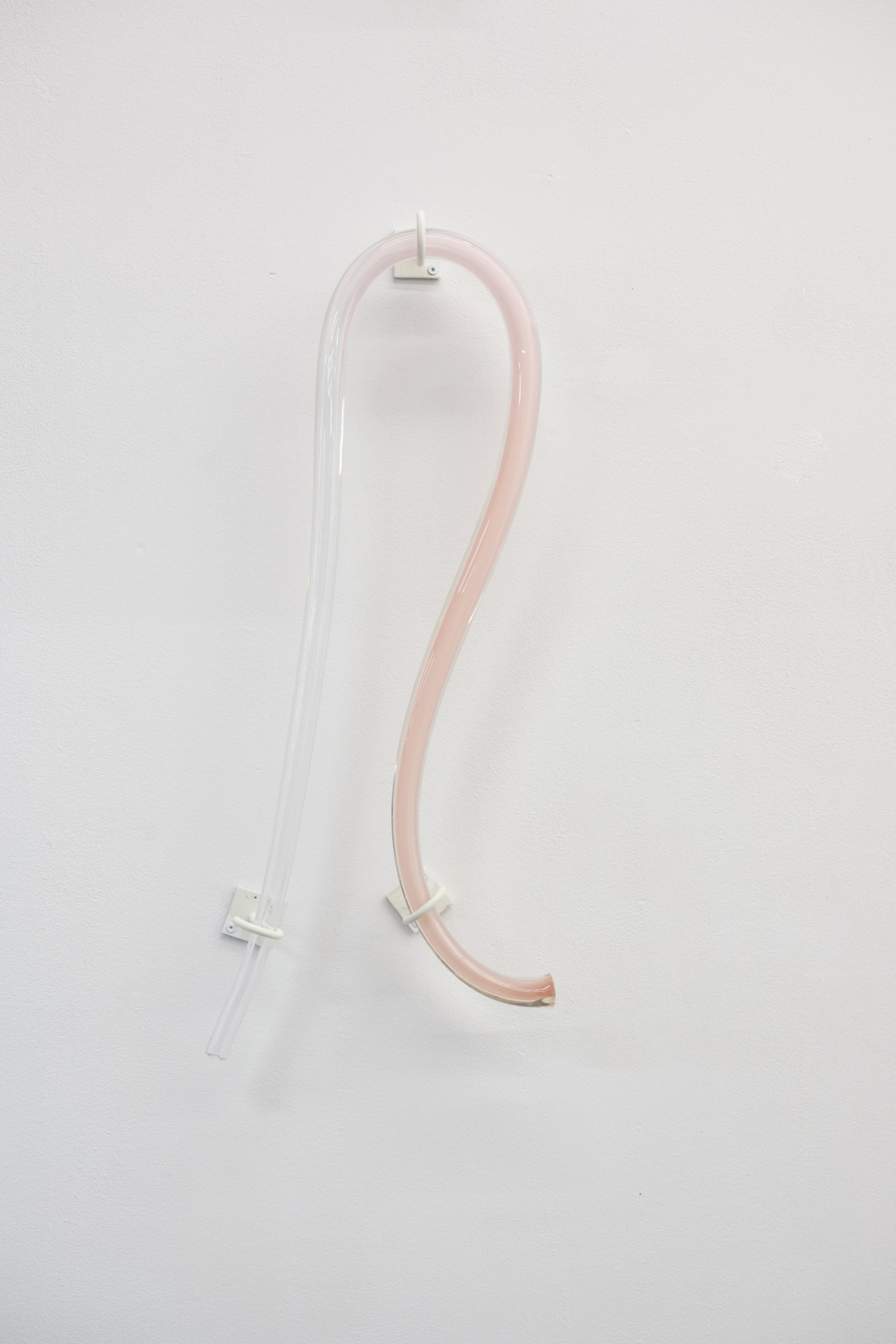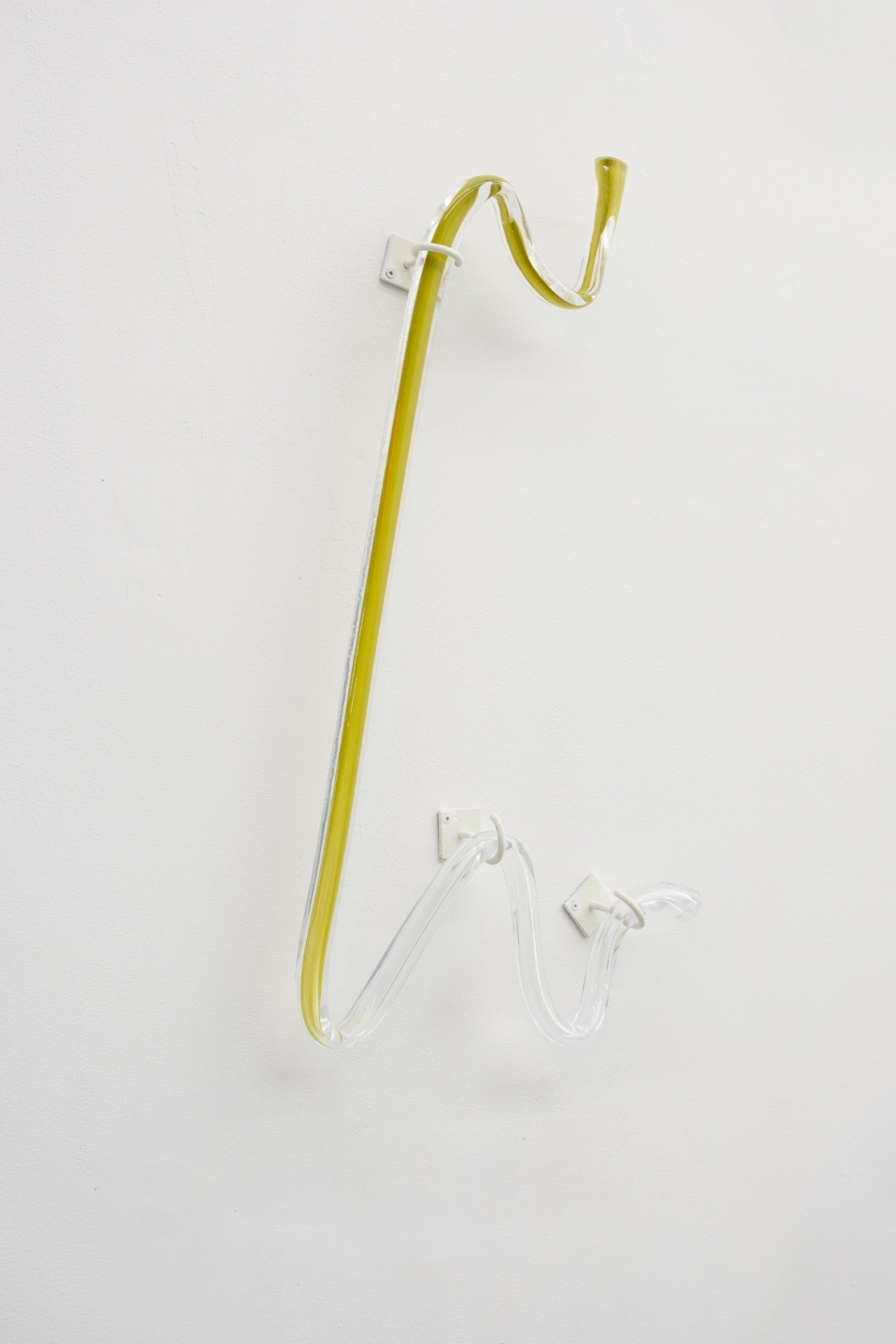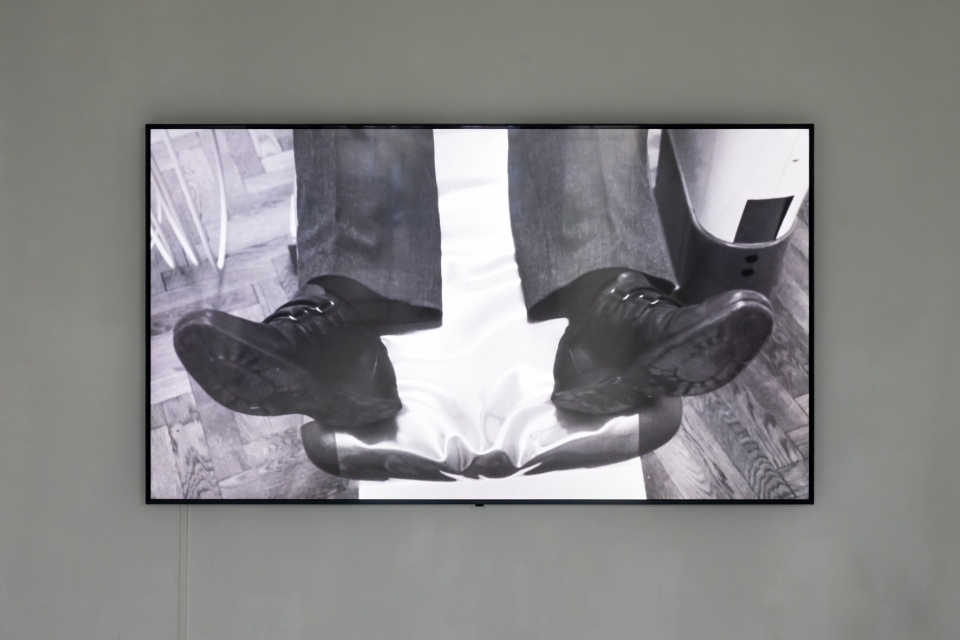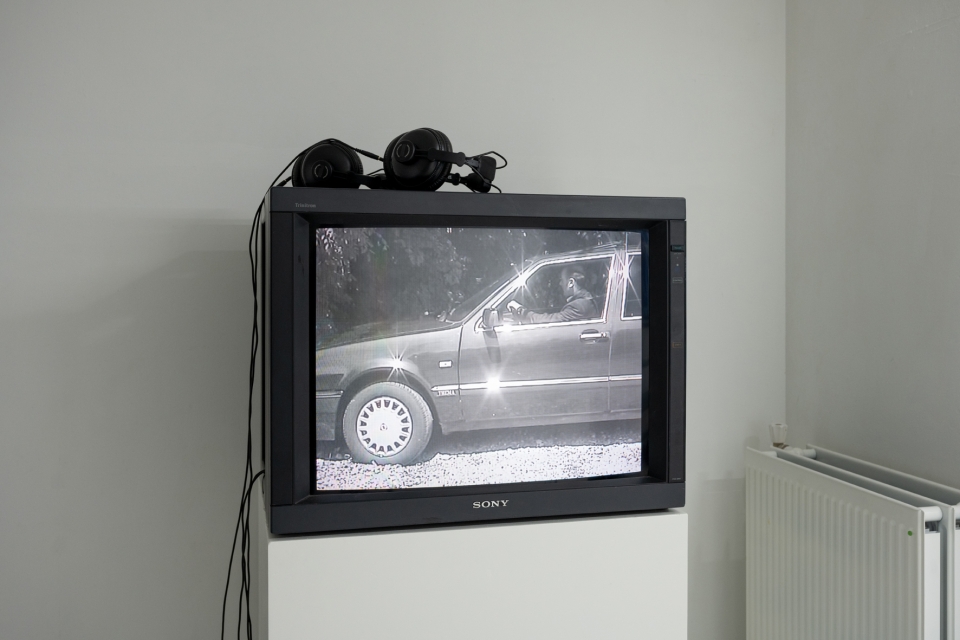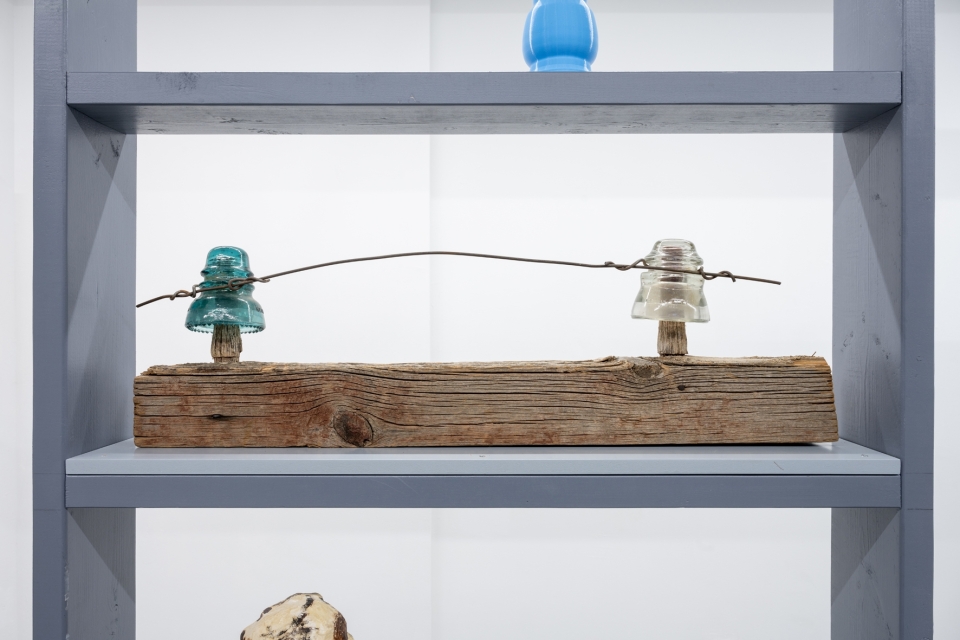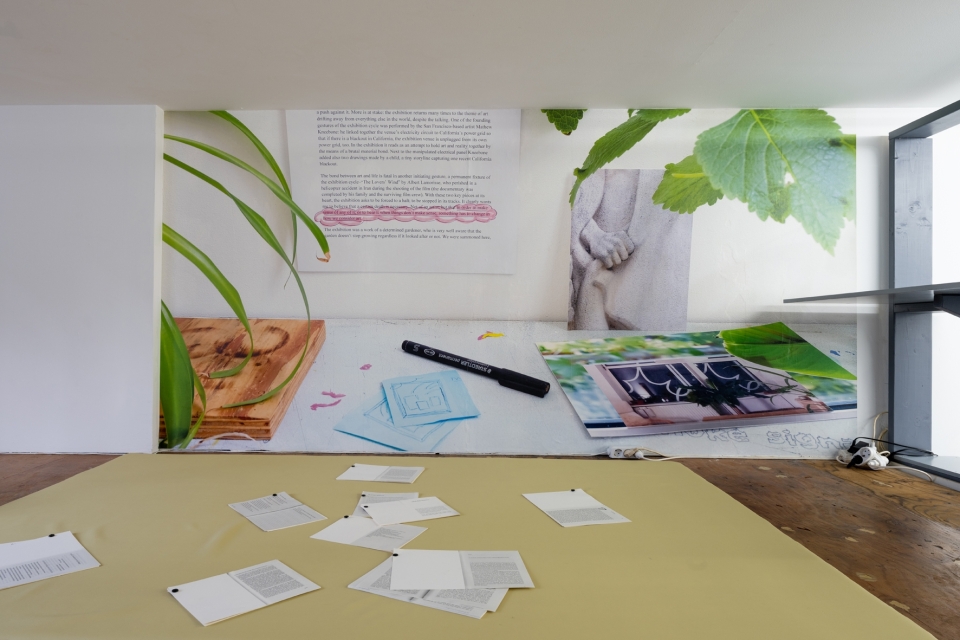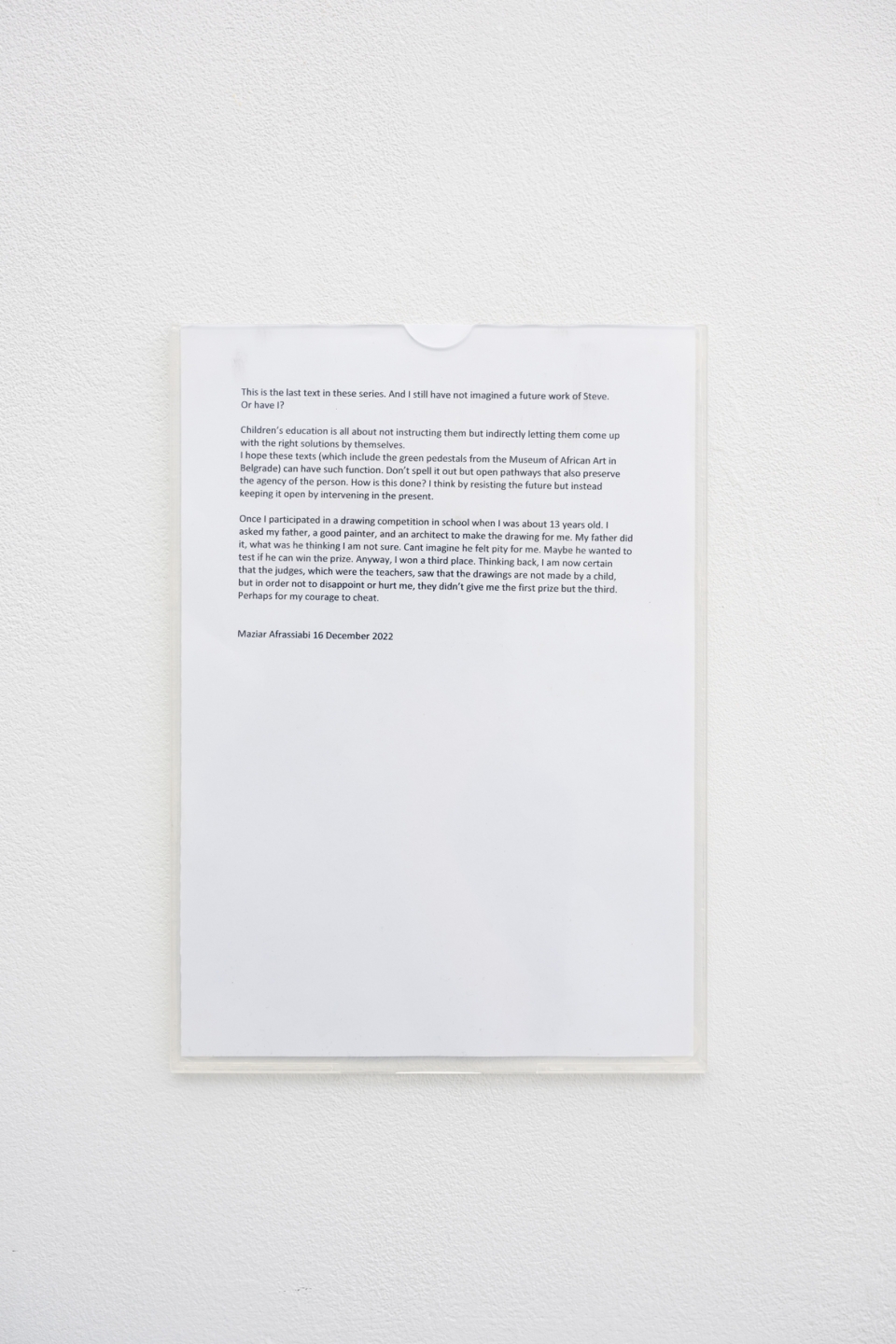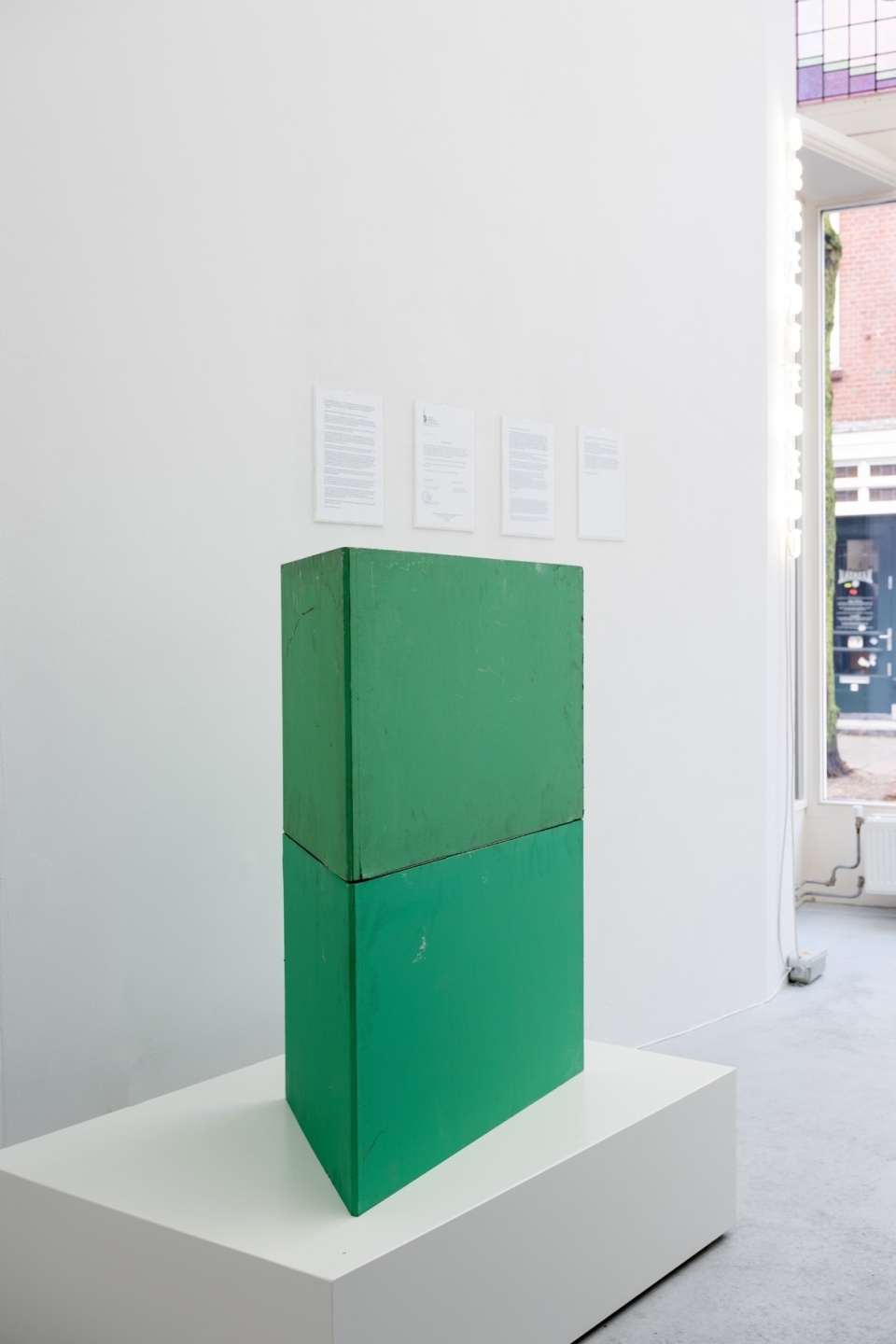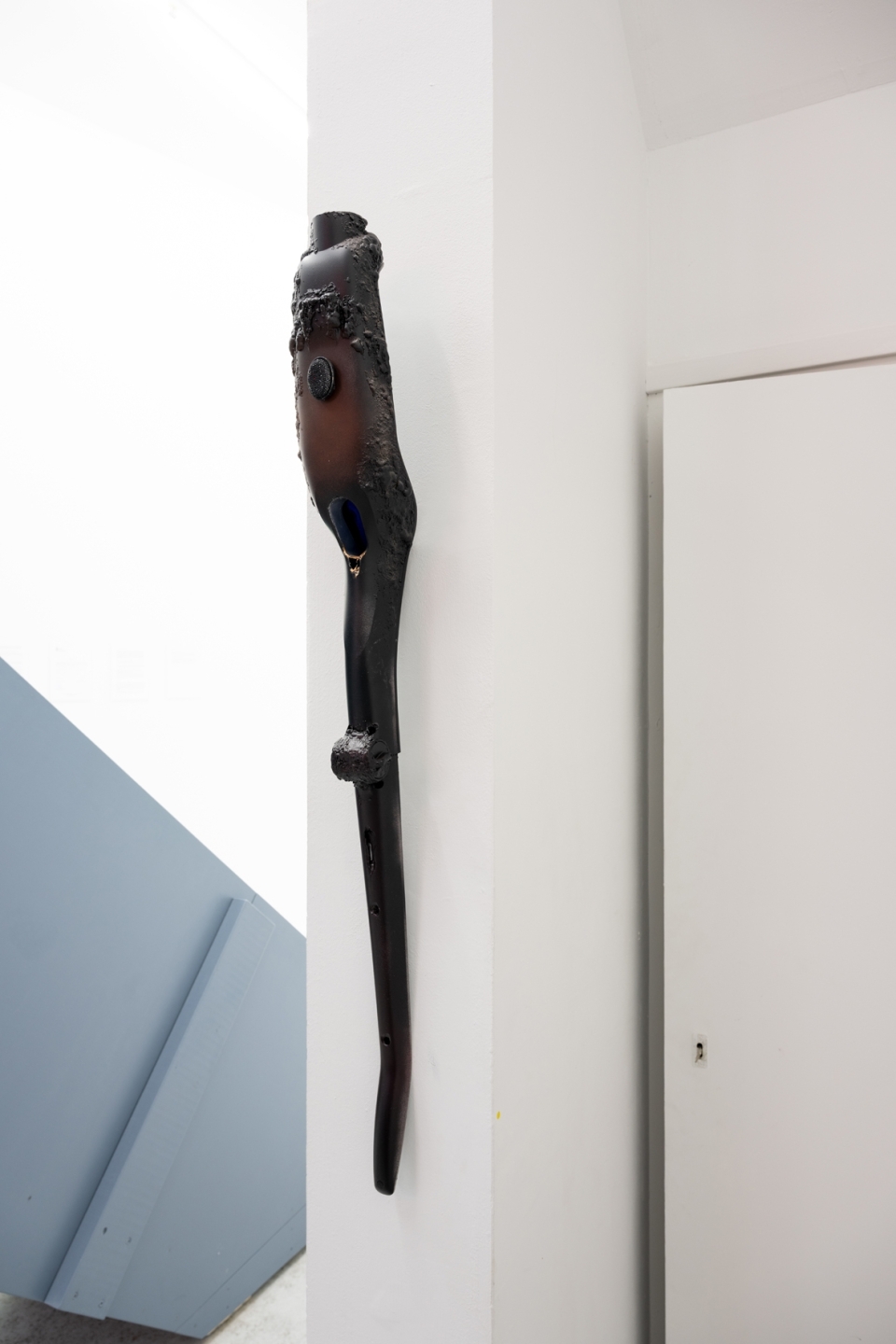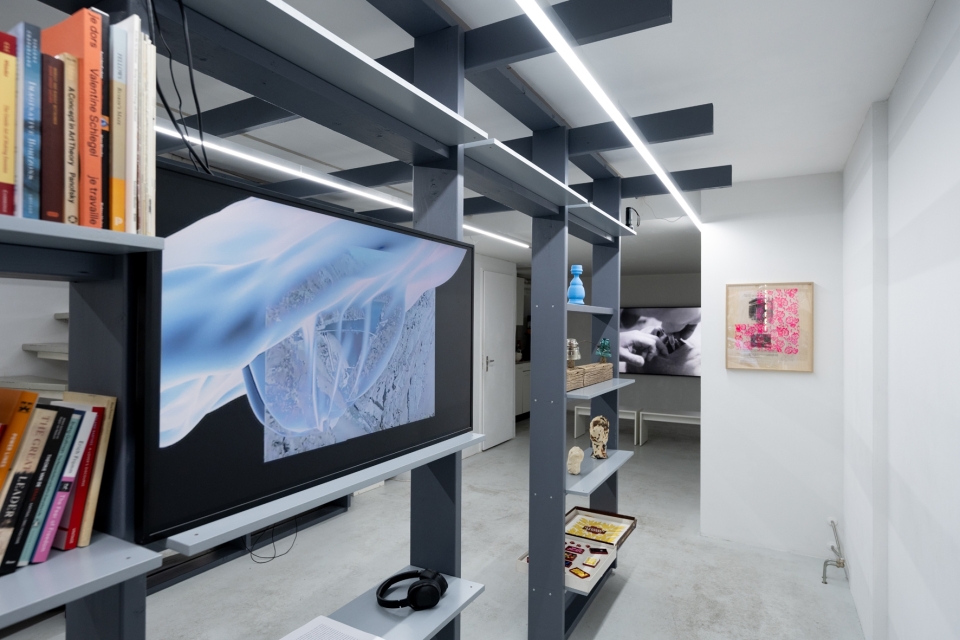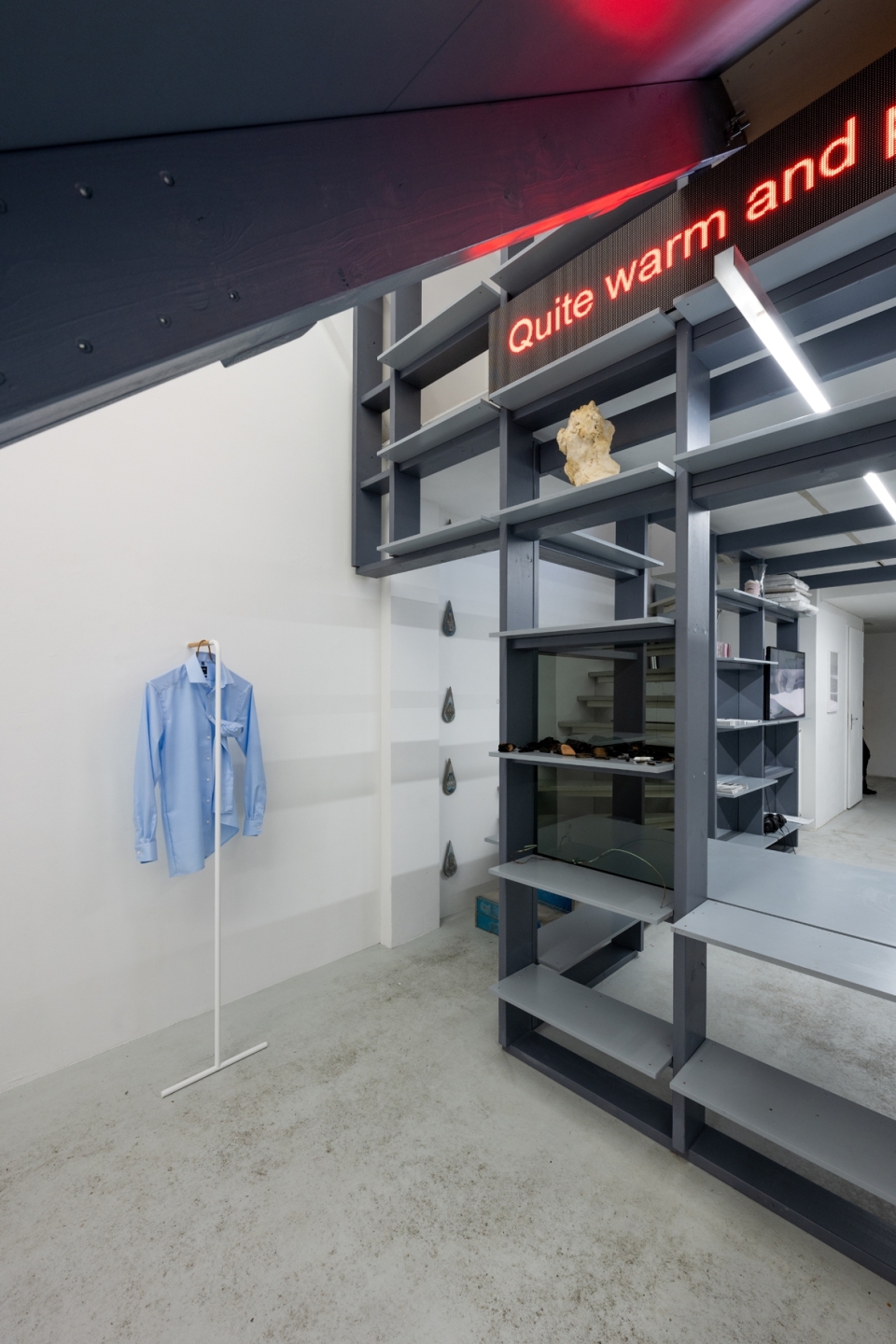Part 6: The Siphon
17.12.2022, 19:00 – 23:00
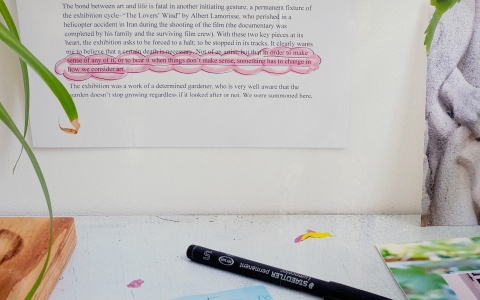

Marije de Wit, Once a reader, 2022. Photo: Lotte Stekelenburg
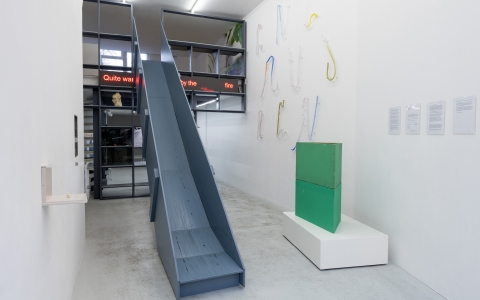

Exhibition view Part 6: The Siphon, December 2022, Rib. Photo: Lotte Stekelenburg
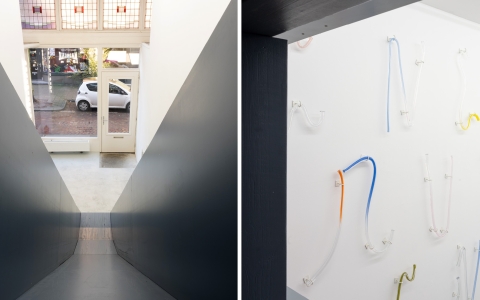

Left: Olivier Goethals, Susurak, 2022. Right: Katarina Zdjelar, Becoming Alphabet, 2019. Photo: Lotte Stekelenburg
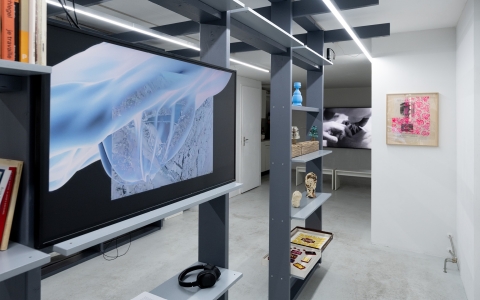

Exhibition view Part 6: The Siphon with works by Kianoosh Motallebi, Mathew Kneebone, Shahin Afrassiabi, Josef Dabernig, Yuki Okumura and Hisachika Takahashi, December 2022, Rib. Photo: Lotte Stekelenburg
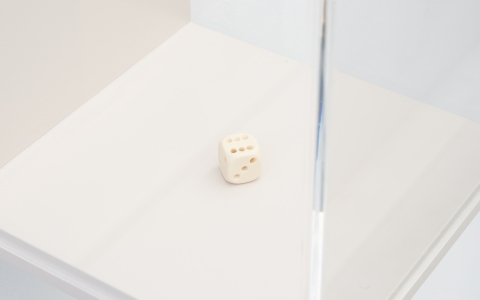

Annaïk Lou Pitteloud, Improving the Odds, 2022. Photo: Lotte Stekelenburg
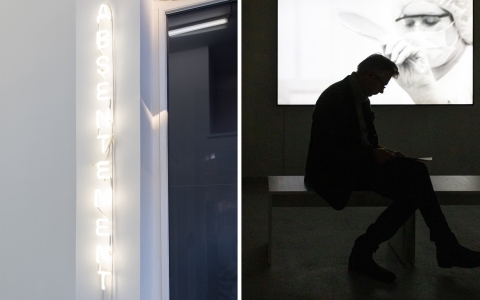

Left: Annaïk Lou Pitteloud, Bar, 2022. Photo: Lotte Stekelenburg. Right: Josef Dabernig, Heavy Metal Detox, 2019, Photo: Job Willems
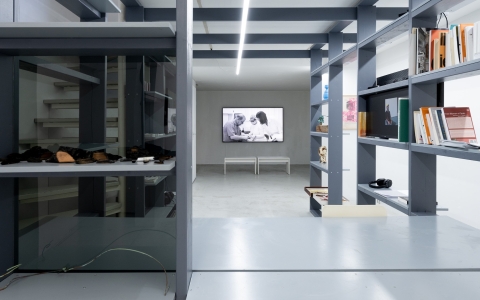

Exhibition view Part 6: The Siphon, December 2022, Rib. Photo: Lotte Stekelenburg
With works by: Shahin Afrassiabi, Steve Van den Bosch, Josef Dabernig, Peter Fengler, gerlach en koop, Olivier Goethals, Thomas Helbig, Reinier van Houdt, Mathew Kneebone, Kianoosh Motellebi, Yuki Okumura with Hisachika Takahashi, Éléonore Pano-Zavaroni, Annaïk Lou Pitteloud, Jack Segbars & Bo Stokkermans, Marije de Wit, and Katarina Zdjelar.
Time to release, let go and flush out. Are detoxification and decontamination just the results of wishful thinking? Notions perpetuated by wellness regimens and pop psychology, let that shit go and move on. No wonder they are popular ideas, who wouldn’t want to imagine that excess waste just disappears?
Yet here we are, dependent on water decontamination sites and underground plumbing networks that we rarely encounter. Occasionally we get a whiff of those unseen and unwanted waters. A siphon, the kind that depends on gravity and pressure to produce a flow of water from above, generates the image of relief and gives a sense of conclusion. But that act of pulling and flushing something away is as much about cleansing as it is about denying the reality of where things end up. Since The Last Terminal: Reflections on the Coming Apocalypse cycle began, we have been thinking about resurfacing, and are curious enough to follow the trail of the flush. Perhaps what we flush is just the background of the exhibition.
In Part 6: The Siphon, Rib welcomes a newly added work by Yuki Okumura with Hisachika Takahashi. Each in their own way, both Yuki Okumura (b.1978) and Hisachika Takahashi (b.1940) explore ways to go beyond one’s body and ego, and their ongoing joint project, which started with Okumura’s 2013 reactivation of Takahashi’s little known solo show at Wide White Space, Antwerp (1967) focuses on what their practices share and how their interaction can change their lives. The contributed piece embodies a possible form of the overlaps between the two artists, while also hinting at their respective relations to Gordon Matta-Clark.
Embodiment also has a place in Katarina Zdjelar’s work, Becoming Alphabet, which involved research into the work of Käthe Kollwitz and dancer Dore Hoyer and takes inspiration from a 1941 poem by Yugoslavian poet Oton Župančič (who assumed the alias Neznani/The Unknown One). Becoming Alphabet is an artistic and political consideration to be together in the ‘unknown’, without language. In essence, it’s a call for self-estrangement as a political act.
In one of her new pieces, Annaïk Lou Pitteloud takes us to the bar, in a word-play with ‘Absentement’, a word that has been appearing and disappearing from the French language dictionary since the 14th century. It is primarily a legal term used to judge people who are not present at their trial. By extension the word then became a way of naming a state or state of mind of a person absent from himself or herself or from the world. It is therefore an active state of absence. The piece is titled Bar, in reference to the neon bar that constitutes it, as well as to the idea of naming a bar: let’s go to the absentement…
Pitteloud’s other work at Rib, Improving the Odds is a hollow ivory dice that increases the odds by plus or minus 30%. This is simply because more material is removed from the face of number 6 than from the face of number 1. 30% is also more or less the percentage defined by affirmative action policies.
Meanwhile, Éléonore Pano-Zavaroni introduces a new film, Silence – For Him & Para Todxs Lxs Otrxs, with the central character, Joachim Pano, her father. She follows him in his quest on the path of his father’s exile, a fighter in the Spanish Republican army who fled to France after Franco’s victory in 1939. He was then interned in a concentration camp on a beach in the south of France before being sent to a labor camp. This quest, and the making of the film itself, is the story of the unspoken, the unrecognized by the French state, and the struggle of a descendant for dignity. It is also the story of a family transmission, at the crossroads of minor and major history. In this film, Pano-Zavaroni searches for what is hidden, the human, the power, the memory, being a little late or delayed, trying to grasp what is left once we have left, once we look at the other side.
Josef Dabernig’s 12-minute b/w HD-video Heavy Metal Detox (Super 16mm footage) can be considered an aesthetic paraphrase on the removal of amalgam dental fillings. The procedure—mirrored from spiritual, sarcastic, existential and nihilistic perspectives—condenses into a cantata in film format. Dabernig introduces the 6-minute video Parking with the production note: A car stops at the roadside. While still sitting
in the car, the driver and passenger, two middle-aged men, remove their clothing deliberately. One then ties the other’s hands with his belt and roughly drags him out of the car. What follows is a gestured lecture, a rather unusual discussion of two men dressed in underwear.
Continuing his investigation into infrastructural degradation, Mathew Kneebone adds
Severed Crossarm to his growing collection of failed utility pole anatomy. The reclaimed fragment consists of a broken Douglas-fir wooden beam, with two glass insulators connected by a rusted copper wire. Glass insulators were initially installed in utility poles across North America at the turn of the century to insulate telegraph lines. Energy utilities have since repurposed these to insulate power lines that distribute high-voltage and mains electricity to homes.
Marije de Wit has changed her installation Once a reader with newly conceived wallpaper in response to Virginija Januškevičiūtė’s essay on Part 4: The Uncommunicative.
Other changes to Part 6: The Siphon include the addition of English subtitles to Jack Segbars and Bo Stokkermans’ video.
Maziar Afrassiabi offers a new text on Steve Van den Bosch’s work, the last in a series of three texts on a future work which began with Untitled – 2023, Materials and dimensions to be determined.
Shaman Chamber Speaker, a new sculpture by Thomas Helbig, enters the space, while his drawings and sculpture Sender left at the end of Part 5: Vibrato.
Atal-Matal, or how the younglings, a new work by Kianoosh Motallebi proposes to take up no space at all, but inserts a translucent 3-D modelled ‘watermark’ spinning human penis (going from flaccid to erect) in front of Albert Lamorisse’s film The Lover’s Wind. A self-aggrandizing or self-defeating intrusion in the exhibition space, depending on how you look at it.
gerlach en koop: The clothes rack reinforces the perception that this one shirt is divided. It has a straight side and one that is intricately shaped. A closer look reveals that the shape is much less complex than it appeared at first—the breast pocket has simply been pulled inside out in a sculptural gesture. Like a tongue. Mute.
In the film Pickpocket by Robert Bresson a provocative gesture links two interior spaces. A man suspected of pickpocketing is summoned to the police station. Sure of himself he demonstrates to the officer how the knife he has been given can be used to cut open a breast pocket—thus fearlessly revealing his knowledge and skills.
At the very same moment his apartment is turned inside out by police officers looking for proof. It was a ruse that deprived the man’s gesture of the power to provoke.
Shahin Afrassiabi was born in Tehran. He studied art at Goldsmiths University in London. He works in Andalucia, Spain. Selected solo exhibitions include Paintings 2016–2018 at Soy Capitán, Berlin (2018), Radical Substance at Soy Capitán, Berlin (2015), Theory of Life at MOT International, London (2012), Subject to Form at Limoncello Gallery, London (2010). Afrassiabi’s work was part of several group shows, such as Been Caught Stealing at Kunsthalle Exnergasse, Vienna (2014), Showcase Preview at South London Gallery, London (2004), Transmission Gallery, Glasgow (2002), Early One Morning, Whitechapel Gallery, London (2002), and ICA, London (2000).
Steve Van den Bosch focuses on the seemingly expressionless, tacit and unspectacular. His work results from zooming in on the boundary between invisibility and pure materiality and puts the implications of artistic production, exhibition and interpretation into perspective with a taste for the absurd. By erasing, doubling, blurring, reversing or reconnecting the elements that define a work of art, objects and situations are created that continually undermine their own status as works of art and almost casually refer to the surrounding conditions from which work can emerge and in which it is subsequently exhibited. Van den Bosch was a resident at HISK in Antwerp (1998–2001) and the Rijksakademie van beeldende kunst in Amsterdam (2006–07). He obtained a doctorate in visual arts at the University of Antwerp in 2016. Van den Bosch currently teaches at LUCA Brussels.
bostokkermans1995 is of it’s time. being one of many who was born into conditions (Tilburg-Netherlands) and who continously tries to survive and (ex)change based on the performative makeability of living.
Josef Dabernig (AT, 1956) is a visual artist and filmmaker based in Vienna: “In my short films I try to create a symbiosis of elements from narrative cinema and the tradition of experimental film. Simple narrative threads are interwoven with strictly conceived spatial settings and elaborate dramaturgies of editing; moreover, the relationship of image and sound is generally conceptually loaded with anachronisms and clashes of genre.”
Peter Fengler is an artist performer and organizer interested in sound. In particular, the experience of sound, its visual power and artistic, political and social implications. From there he builds an oeuvre of contexts (imaginary or otherwise) that lead to performances, concerts, lectures, objects, installations, publications. He is interested in subversiveness, experimentation, and the margins. He performs and exhibits in international contexts such as: National Gallery of Victoria Melbourne, Cafe OTO London, KASK Ghent, MUHKA Antwerp, Kunstinstituut Melly (formerly known as Witte de With), CCA, SMBA Amsterdam and Onomatopee Eindhoven. He gives guest lectures in academic settings and curates programs for various institutions. He co-founded DE PLAYER, a polymorph platform for image sound and performance, which has now been relaunched as DE_LAYER. Here the focus is on publications by artists who use sound as an artistic medium. It also occasionally includes small live presentations.
Collective artist gerlach en koop works in twofold to invite a third. They live and work in The Hague, NL and Brussels, BE. Solo exhibitions include GAK Bremen, DE; Bonnefantenmuseum, Maastricht, NL; de Appel, Amsterdam, NL; Temporary Gallery, Cologne, DE; Alte Fabrik, Rapperswil-Jona, CH; 1646, The Hague, NL; Kröller-Müller Museum, Otterlo, NL; Library Van Abbemuseum, Eindhoven, NL; Stroom, The Hague, NL. Their work has been part of group exhibitions at the Project Arts Centre, Dublin, IE; La Criée, Rennes, FR; FIAC, Jardin des Tuileries, Paris, FR; de Appel, Amsterdam, NL; Mu.ZEE, Oostende, BE; de Vleeshal, Middelburg, NL; Netwerk, Aalst, BE; Le Grand Café, Saint-Nazaire, FR; Stroom, The Hague, NL; A Tale of A Tub, Rotterdam, NL; Lesage, Brussels, BE; S.M.A.K, Ghent, BE; the Baltic Triennial at CAC Vilnius, LT and Bunkier Sztuki, Kraków, PL; and Hammer Museum, Los Angeles, USA.
Olivier Goethals studied Architecture and Urban Development. He is working simultaneously as architect and artist. In his wide practice he researches the connection between space and consciousness. Olivier made spatial interventions and artistic installations for venues, such as Het Nieuwe Instituut Rotterdam, Z33 Hasselt, Extra City Antwerp, Be-Part Waregem, SMAK Ghent & Palais De Tokyo Paris. Previously he worked as a freelance senior architect for De Vylder Vinck Taillieu (2008–2016). Since 2010, he is teaching at the KULeuven Architecture Department. He was a guest critic at RU Ghent faculty of Architecture, LUCA School of Arts Experimental Studio and ETH Zurich faculty of Architecture. Goethals is in charge of the design and implementation of all spatial interventions for the art collective 019.
Thomas Helbig (DE, 1967) is an artist based in Berlin. The practice of Thomas Helbig contains painting, drawing and sculpture, while each of the media plays on its own field. The focus of the paintings is colour itself—in its intrinsic value, its materiality and the ability to create spatial illusions from countless shades of light and dark. In contrast, his collage sculptures demonstrate a different kind of transformation of the source materials he uses. His repertoire is based on a fundus of discarded, thrown-out things, as well as kitschy plastic sculptures. Helbig mixes and connects these disparate elements into new forms, which are displayed as coded messages from an enigmatic present. Helbig attended the Academy of Fine Arts, Munich and Goldsmiths, University of London, from 1989 to 1996, and is represented by Galerie Guido W. Baudach, Berlin.
Reinier van Houdt is a musician/composer from Rotterdam (NL) working from a fascination for matters that escape notation: sound, timing, space, physicality, memory, noise, environment—points beyond composition, interpretation and improvisation. He has released his work on five solo albums on the labels Hallow Ground, Discreet Editions, Erstwhile, Elsewhere and Matière Mémoire. He has collaborated with artists including Christian Marclay, Annea Lockwood, Alvin Lucier, Petra Strahovnik, Robert Ashley and Luc Ferrari.
Mathew Kneebone’s practice is founded on research into uncertainties surrounding technology, often combining different histories, myths, and folklore. His work touches upon various media including drawing, electronics, writing, sound, and performance to reconfigure or re-contextualize certain technologies, exploring an ambivalent blend of past and present. His work has recently been exhibited at Kunstverein, Amsterdam; 019, Ghent; Extra City, Antwerp; and Cloaca Projects, San Francisco. His writing has been published in Trigger Magazine, OASE Journal for Architecture, The Bulletins of The Serving Library, Another World, Umwelten, among others. He has given talks and workshops at Minnesota Street Project, San Francisco; V2_ Lab for Unstable Media, Rotterdam; Central Saint Martins, London; Sandberg Instituut, Amsterdam; San Serriffe, Amsterdam; EKA Gallery, Tallinn; Sitterwerk, St. Gallen; UEL, London. He teaches at California College of The Arts, San Francisco, where he is thesis writing supervisor.
Kianoosh Motallebi (UK, 1982) is a visual artist based in Brussels. He completed his master’s degree at the Slade School of Fine Art in London. Subsequently he was a resident at the Rijksakademie van Beeldende Kunsten. Motallebi took part in The Physical Center (Guest Projects, London, presented by Yinka Shonibare), Erased Walls (Berlin) and Rijksakademie Open 2011. His work has also been shown at the Van der Mieden Gallery (Antwerp) and he was artist-in-residence at Very Real Time (Cape Town). In 2017 he designed the coin De Stelling van Amsterdam Vijfje 2017 Zilver Proof. He is currently part of the artist collective Level Five (Brussels).
Yuki Okumura (JP, 1978) works at the intersection of body and translation, through films, installations, performative actions, and writings. Since 2005 onwards, in parallel to—or rather as part of—his own artistic practice, Okumura has been serving as a translator in the literal sense, between English and Japanese. Soon after leaving Japan in 2013, he ran across Hisachika Takahashi, with whom he initiated a joint project informed by their artistic and biographical overlaps. Its aspects and phases have been presented at Project Room, WIELS, Brussels, 2013; Mori Art Museum, Tokyo, 2013; Exhibition Research Center, Liverpool, 2013–2014; Annet Gelink Gallery, Amsterdam, 2015; Maison Hermès Le Forum, Tokyo, 2016; June Art Fair, Basel, 2019 (with MISAKO & ROSEN); among others. Okumura’s 2016 poem Sunset Song deviated from the project’s framework, opening up a pathway that eventually led to his subsequent film Welcome Back, Gordon Matta-Clark, 2017.
Éléonore Pano-Zavaroni teaches art and art history at Esaaa (Annecy Alpes School of Art). She runs the art platform 5OU6ÎLES and the magazine Idoine and is one of the members of the scientific committee of the biennial Carbone, Saint-Etienne. Some of her exhibitions are Living Fair with Nayoung Kim, Changnyeong Bugok Spadium, South Korea (2019), Rendez-vous La Havane in Centro de arte Wifredo Lam, Cuba (2018) and Rendez-vous/Biennale de Lyon, Institut d’art contemporain, Villeurbanne (2017). She curated Eutrapelia, Back Lane West, Redruth, UK (2018) and published the monographic edition Entretien, Martial Déflacieux, Éléonore Pano-Zavaroni, Virginie Bobin, Stéphane Sauzedde, Esaaa éditions (2017). She is currently preparing a solo exhibition for next year at the Flaine Art Center and an artist’s book Rendez-vous.
Annaïk Lou Pitteloud (CH, 1980) lives and works between Bern and Brussels. Her work makes use of different media to direct the viewer's attention to the invisible components of image-construction, the museum space and the creative process itself. Pitteloud’s pared-down vocabulary raises critical questions to do with social issues, while challenging the art world’s mechanisms and its codes of perception, transmission and presentation. Her work has been presented amongst others in: Musée cantonal des Beaux-Arts Lausanne, CH; Kunstmuseum St. Gallen, LV; Museo cantonale d'Arte Lugano, CH; Kunsthalle Bern, CH; Witte de With Rotterdam, NL; Riga Biennal (2018), Moscow Biennal, RU; Shanghai Biennal CN.
Jack Segbars is an artist based in Rotterdam. He is engaged with the conditions and parameters that define the politics of art production. The interconnections between the different positions: critic writer and visual artist are mobilized as artistic investigation. In 2009 he produced the publication All Around the Periphery (Onomatopee) that deals with the overlap of positions and domains. In 2012 it was followed by Inertia (Onomatopee) a travelogue of visits to Palestine that deals with artistic engagement. Segbars regularly writes articles on art and art-related subjects for Metropolis M, Witte Raaf, Parse and Open! He completed his PhD research at the PhDArts program of Leiden University the Netherlands.
Marije de Wit lives and works in Rotterdam. A selection of her recent activities are: artist talk in the context of artist in context, Netherlands Film Academy, Amsterdam; There Is So Much Thinking to Be Done, Wiels Project Space, Brussels; site-specific photo installation, Clermont-Ferrand (FR), thanks to Artistes en residence; and ESACM, VERY|BODY|TIME, edition of 25 posters, spread over free pasting places in Rotterdam.
Hisachika Takahashi (JP, 1940) works at the intersection of memory and collaboration, through paintings, sculptures, collages, drawings, and instructions. After leaving Japan in 1962, in parallel to—or rather as part of—his own artistic practice, Takahashi served as an assistant to Lucio Fontana (1964 –1966) and Robert Rauschenberg (1969–2008), both of whom he also collaborated with, while also occasionally cooking at the artist-run restaurant FOOD (1971–1974), with Gordon Matta-Clark and others. Solo shows have been held at Galerie Cavallino, Venice, 1963; Galleria Montenapoleone, Milan, 1964; Wide White Space, Antwerp, 1967; 112 Greene Street/Workshop, New York, 1973; Tampa Museum of Art, Tampa, 1987; Project Room, WIELS, Brussels, 2013; Sean Kelly Gallery, New York, 2013; Exhibition Research Center, Liverpool, 2013–2014; MISAKO & ROSEN, Tokyo, 2021; Schiefe Zähne, Berlin, 2021; among others.
Katarina Zdjelar grew up in Belgrade and is currently based in Rotterdam. Working mainly in the medium of moving image and installation, her work explores the way one body encounters another as a site of resistance and possibility, pointing to the fragile agency of collective action in the present. Voice, music, sound and language have been the core interests throughout her practice. Her most recent works look at potentials and legacies of pacifist (proto) feminist practices, including that of Käthe Kollwitz and Dore Hoyer. Zdjelar represented Serbia at the 53rd Venice Biennale and has participated in numerous solo and group exhibitions internationally at such venues as 11th Berlin Biennale, Stedelijk Museum Bureau Amsterdam; Metropolitan Museum of Photography, Tokyo; Frieze Foundation, London; Casino Luxembourg; De Appel, Amsterdam, MACBA Barcelona; MCOB Museum of Contemporary Art Belgrade; Museum Sztuki Lodz. She was awarded several prizes, most recently the MMSU Award of the 24thZagreb Salon (2019), Dolf Henkes Prize (2017), as she was one of the nominees for the Dutch Prix de Rome Award (2017, 2010). Zdjelar is also an educator in her post as a core tutor at Piet Zwart Institute (MA Fine Art), WdKA Rotterdam and MAR (Master Artistic Research) at the Royal Academy of Arts in The Hague.



